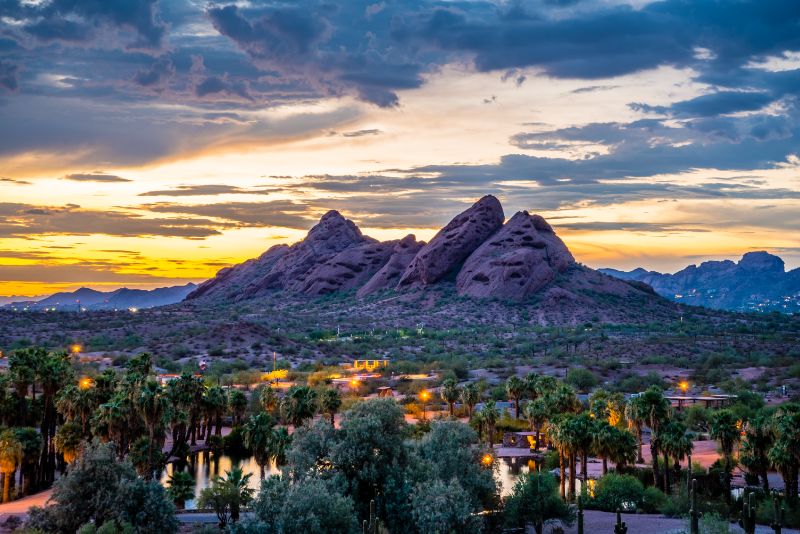
Southeast Valley
Welcome to the Southeast Valley of the Sun!
First, the term “East Valley” is a multi-city region within the Phoenix Metropolitan Area and is a loosely defined region, with differing definitions of what constitutes it.
It’s important to mention that The Valley is mostly divided East and West based on what side of Central Avenue you are located within. This “grid” format in which the roads were designed, is commonly referred to as “cross streets.”
To the east of Central Avenue, you have roads running north and south and are known as the “Street.” Likewise, to the west of Central, the roads that run north and south are called “Avenues.”
While the East Valley Partnership, defines the East Valley section of Metro-Phoenix as an area that encompasses Apache Junction, Chandler, Gilbert, Mesa, Queen Creek, and Tempe, because the length of Scottsdale being so long in a north direction leading all the way up to what’s commonly known now as North Scottsdale, the Southeast Valley primarily refers to the communities that are south and east of Scottsdale, starting (arguably) in north Tempe.
Ahwatukee, which is an urban village of the City of Phoenix, at the base of South Mountain, is normally considered to be part of the East Valley as well.
The Southeast Valley offers an extreme variety of homes, demographics, populations, public services, and amenities. A basic rule of thumb is the closer into the City of Phoenix you get, the older the homes are, as they were developed first, before the continued sprawl developed in the 1980’s and on into the 1990’s… it still continues to the present day. Homes in Mesa, Tempe, and Chandler, for example, usually have larger lots and private pools (in many cases but not all of course) and the one-level living style floor plans with covered carports (as opposed to garages) were very popular at the time they were constructed. In these modern times, most construct 2 car garages as upgrades.
As the sprawl and further development drove builders to construct homes for high capacity to meet consumer demand, some “master planned communities” began to spring up with much smaller lots, homes placed tighter together, and featured more common amenities for the neighborhoods such as community pools, exercise rooms and play areas for children. Many schools were built in close proximity to high density areas.
The further south and southeast one travels, the newer the developments become. At this time, Queen Creek is the furthest southeastern community still in Maricopa County that was constructed in 1989 and still has areas being developed today. Beyond that, you will cross into Pinal County en route to San Tan Village and other communities like Florence, Arizona, while you continue south towards Tucson, approaching a very short distance to Nogales, Mexico.
The area is so vast with so many amazing places to visit, things to do, communities to be a part of for any and all demographics. I thought it better to condense some of it below into proper links to each municipality for anyone who wishes to take a deep dive into the specifics.
In short, these southeast comminutes are very similar to one another; it’s more a matter of age of home, population, growth, resort style living vs close to campus – as Arizona State University is nestled in the heart of Tempe.
Further, the southeast area of the Valley is very education driven, hi-tech orientated, forward-thinking, ever-evolving aerospace, and dynamic research/development have been increasing non-stop over the years. It offers so much in the way of art, culture, outdoor lifestyles, healthy living, and an abundance of entertainment options as well. Whatever it is you are looking for, chances are, it’s right here.
Please click the community name below to be redirected.
Tempe | Mesa | Chandler | Gilbert | Queen Creek | Apache Junction
Sorry we are experiencing system issues. Please try again.

